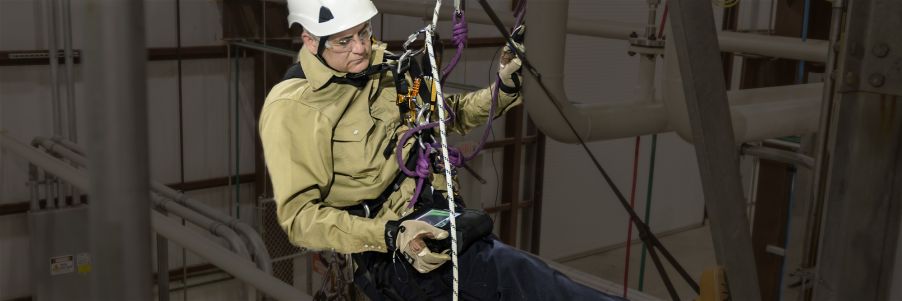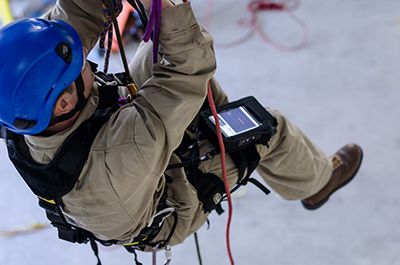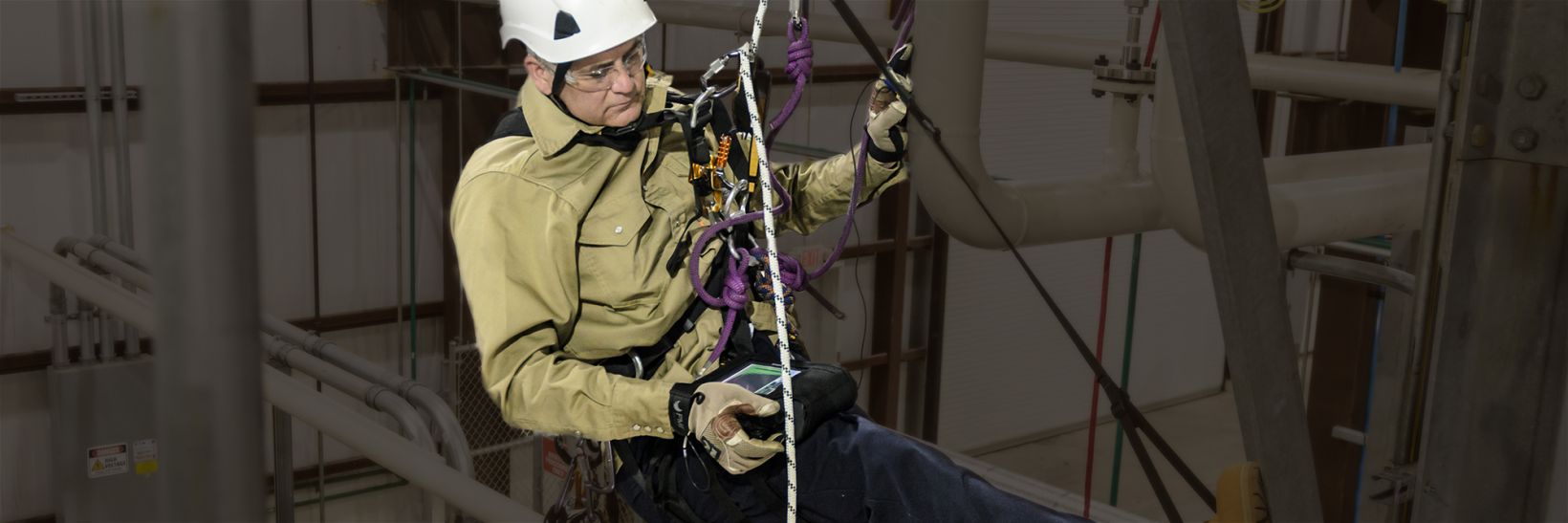NDT inspections are essential for helping to ensure safety in a variety of industries and applications. However, it’s not always easy to reach the inspection area. In the past, difficult-to-access sections of pipes, vessels, supports, and other structures were reached via scaffolding. Large steel structures would be erected, and the NDT technician would stand on the scaffold to perform the inspection. Today, this bottom up approach is being replaced in many applications by a top down approach using rope access inspectors.
Why rope access?
In many situations, rope access offers advantages over scaffolding-based inspections.
It’s often faster and cheaper.
Rope access usually requires less equipment, making it faster. When using scaffolding, there can be significant time and expense involved in building the structure. You may need to pay workers to construct the scaffolding, plus the additional cost of purchasing or renting the equipment. By comparison, the rigging for a rope access inspection can be accomplished in a few minutes or hours.
There are fewer limitations and disruptions.
Scaffolding is large and takes up a lot of space. Even with scaffolding, it’s not always easy to access the inspection area. Rope access provides users with more flexibility. In many cases, structures that are tough or even impossible to reach via scaffolding, such as the underside of an oil rig, can be easily accessed using rope access techniques.
Rope access inspection is safe.
One of the myths about rope access inspection is that it’s a very dangerous job. The International Industrial Rope Access Trade Association (IRATA) and the Society of Professional Rope Access Technicians (SPRAT) set safety standards and regulations that rope access instructors teach their students.
To help ensure safety, rope access systems are redundant. Rope access technicians work on a two-rope system. The technicians are attached to both ropes by independently rigged anchor points. If one rope ever failed, the backup system can be immediately accessed.
How we can help.
With features designed for rope access applications, our EPOCH® 6LT ultrasonic flaw detector helps inspectors stay safe while making it easier for them to do their jobs. The optional rope access accessory kit turns the flaw detector into an instrument optimized for work at height applications.
Portable and powerful, the EPOCH 6LT flaw detector has the features to get the job done. With the accessory kit, the flaw detector securely attaches to your leg and harness, keeping the instrument secure and easily accessible and enabling your hands to stay free to work the rigging or maintain balance. The display rotates from horizontal to vertical, so the A-scan remains in an ideal viewing position while the instrument is on your leg, and the buttons and rotary knob remain readily accessible for easy parameter adjustments.
The EPOCH 6LT flaw detector is optimized for rope access applications.
Already engineered for IP65/67, the rope access accessory kit includes a soft case that provides added protection for the flaw detector while it’s attached to your leg. A removable display protector helps protect the screen from damage from carabiners, ropes, and falling debris.
Want to learn more?
Check out the EPOCH 6LT flaw detector’s rope access web page
Get In Touch



